Five finalists selected in prestigious pediatric medical device pitch competition
Electrophysiology device innovators gain access to pediatric accelerator and will compete in September 2021 final showcase.
Electrophysiology device innovators gain access to pediatric accelerator and will compete in September 2021 final showcase.

Mothers who are Hispanic or who come from rural or low socioeconomic status neighborhoods are less likely to have their child’s critical heart condition diagnosed before birth, according to a new study in the journal Circulation.
Mothers who are Hispanic or who come from rural or low socioeconomic status neighborhoods are less likely to have their child’s critical heart condition diagnosed before birth, according to a new study in the journal Circulation.
This is the largest and most geographically diverse study of these challenges to date. The study compared patient data of more than 1,800 children from the United State and Canada diagnosed with two of the most common, and the most serious, critical congenital heart defects: hypoplastic left heart syndrome (HLHS), when the left side of the heart is not developed completely, and transposition of the great arteries (TGA), when the two main arteries that carry blood away from the heart are reversed.
“The earlier we diagnose a heart defect, especially a serious one such as HLHS or TGA, the sooner we can make a plan for how to safely deliver the infant and reduce the impacts of that heart defect on the rest of the body,” says Anita Krishnan, M.D., first author and cardiologist at Children’s National Hospital. “Early detection and diagnosis of these conditions is crucial to ensuring the best possible outcome for the child, especially in protecting the brain.”
Even when infants’ heart defects were detected before birth, babies from neighborhoods with lower socioeconomic status were detected later in gestation than others.
“The COVID-19 pandemic has brought the idea of significant disparities in health care to the forefront of our national attention,” says Dr. Krishnan. “Even though many health care providers have seen these inequities firsthand in their own clinical experience, it was still surprising to see the strength of the association between socioeconomic position and the care available to mothers.”
In both the United States and Canada, expectant mothers are first screened as part of routine prenatal care in the first trimester for early signs of congenital heart defects and other genetic disorders via blood screen and ultrasound. In the second trimester, a comprehensive ultrasound evaluation for structural anomalies is routine. If any issues are detected, the mother is referred for a fetal echocardiogram and counseling.
The authors suggest that decreased linkages between neighborhoods and people identified in the study and subspecialists could contribute to the disparities found in the study.
“Prenatal detection rates may improve if we are able to leverage outreach and telehealth to strengthen the relationships between these specialties and the groups we identified in the study,” Dr. Krishnan says.
The study included a total of 1,862 patients, including 1,171 patients with HLHS (91.8% prenatally diagnosed) and 691 with TGA (58% prenatally diagnosed). The study group included prenatally diagnosed fetuses with HLHS or TGA and postnatally diagnosed infants less than two months old with HLHS or TGA. Data was collected from institutions participating in the Fetal Heart Society, a non-profit 501(c) multicenter research collaborative with a mission to advance the field of fetal cardiovascular care and science. Mary Donofrio, M.D., director of Prenatal Cardiology at Children’s National, is society president and served as a senior author on this study.
Read the AHA’s press release: Prenatal detection of heart defects lower in rural, poor areas and among Hispanic women.

A first-of-its-kind study demonstrated that IV carnitine supplementation is associated with improvement in myocardial strain and repletion of plasma total and free carnitine in children with AKI receiving CRRT.
Supplementation of a special nutrient could help improve heart function in children receiving continuous dialysis in critical care units. The nutrient carnitine plays an essential role in producing energy for use by heart and skeletal muscles. Critically ill children with acute kidney dysfunction often need a continuous dialysis therapy (also known as CRRT, continuous renal replacement therapy) to help remove toxins while kidneys are not working. An unintended consequence of this CRRT is removal of carnitine. Often these critically ill children are unable to eat by mouth and therefore can’t receive carnitine unless it is supplemented. Children’s National Hospital researchers have proven that intravenous carnitine supplementation is associated with repletion of the body’s carnitine supply and may cause improvement in heart function as shown by heart strain analysis (which detects subclinical cardiac dysfunction that may not be apparent by traditional echocardiography).
In a first-of-its-kind study, the Children’s National researchers, Asha Moudgil, M.D., Kristen Sgambat, M.D., and Sarah Clauss, M.D., investigated carnitine deficiency in children receiving CRRT. They demonstrated for the first time that these children become severely deficient in carnitine after being on CRRT for >1 week, and that carnitine supplementation is associated with carnitine repletion and improved heart function. This knowledge can help to guide clinical care, as carnitine can be easily added to the IV nutritional formulations that are typically given to these patients.
Although little was previously known about carnitine status in patients with acute kidney injury (AKI) receiving CRRT, iatrogenic carnitine deficiency related to chronic hemodialysis (HD) in patients with end stage renal disease is a well-known phenomenon. It was theorized that given the continuous removal of solutes by CRRT in combination with lack of dietary intake and impaired production of endogenous carnitine by the kidney in critically ill children with AKI, carnitine would be rapidly depleted.
The latest controlled pilot study (NCT01941823) of 48 children hypothesized that carnitine supplementation would improve left ventricular function in children receiving CRRT. Children ages 1-21 years with AKI requiring CRRT, who were admitted to the pediatric intensive care unit at Children’s National Hospital from 2015 to 2018 were eligible to prospectively enroll in the “CRRT Intervention group,” if they were total parenteral nutrition (TPN)-dependent and not receiving any enteral or IV carnitine prior to enrollment.
The researchers say that “An exciting collaborative effort between nephrology and cardiology made it possible to use a sophisticated technology known as speckle tracking imaging to study the effects of carnitine on heart in this population.” This technology can identify early changes in heart motion, also known as cardiac strain that may not be detected using standard heart imaging techniques.
This is the first study to demonstrate that IV carnitine supplementation is associated with improvement in myocardial strain and repletion of plasma total and free carnitine in children with AKI receiving CRRT. A cohort of pediatric chronic HD patients demonstrated similar benefits in a prior study conducted by Drs. Moudgil and Sgambat. Compared with chronic HD, carnitine is even more rapidly depleted by CRRT, with losses approximating 80% of intake. The effect of carnitine deficiency and supplementation on cardiovascular function in patients receiving CRRT had not been previously investigated.
The pilot study by Drs. Moudgil, Sgambat, and Clauss was single center and limited by small sample size. The small sample size may have limited the ability to detect significant differences in demographics and clinical characteristics and multivariable analyses could not be performed. However, given that it is a pilot study, the findings provide a solid launching point for future investigations to show how supplementation can be best utilized to optimize cardiac outcomes in children receiving CRRT.
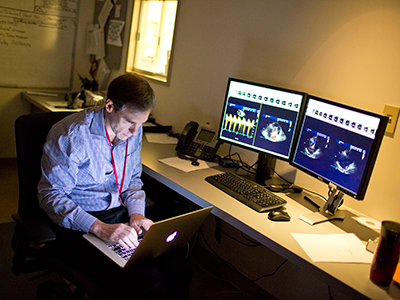
Dr. Craig Sable and pediatric cardiology colleagues led the creation of a scientific statement and advocacy statement focused on eradicating RHD.
A pair of articles appearing in the American Heart Association’s (AHA) journal Circulation lays out a call to action for advocacy and scientific priorities crucial to the global eradication of rheumatic heart disease (RHD).
Cardiologists from Children’s National Hospital, and others who completed their pediatric cardiology fellowships at Children’s National before moving on to careers at other institutions, have been active proponents and advocates for these efforts for many years and led key research and clinical care efforts related to RHD in other countries of the world.
These cardiologists, including the associate chief of cardiology at Children’s National, Craig Sable, M.D., who previously served as chair of the AHA Council on Lifelong Congenital Heart Disease and Heart Health in the Young, also helped lead the creation of these new published statements.
Contemporary diagnosis and management of rheumatic heart disease: Implications for closing the gap
This clinical and research statement “seeks to examine the current state of-the-art recommendations and to identify gaps in diagnosis and treatment globally that can inform strategies for reducing disease burden.”
Key recommendations and related challenges were mapped out, including:
The recommendations made in the scientific statement form the foundation for the advocacy companion document.
The AHA’s call to action for reducing the global burden of rheumatic heart disease: a policy statement from the AHA
The advocacy statement outlines five key areas of support:
The authors write, “In bolstering the efforts of the American Heart Association to combat RHD, we hope to inspire others to collaborate, communicate and contribute.”
Speaking of the two statements as a whole, the authors of the scientific statement conclude that, “Ultimately, the combination of expanded treatment options, research and advocacy built on existing knowledge and science provides the best opportunity to address the burden of rheumatic heart disease.”
Read more about Children’s National Heart Institute’s research, education and clinical care in rheumatic heart disease.
Craig Sable, M.D., Associate Chief of the Division of Cardiology and Director of Echocardiography at Children’s National Health System, is working with hundreds of doctors to create a scalable solution to reduce the global burden of rheumatic heart disease (RHD). Dr. Sable received a lifetime achievement award — the 2018 Cardiovascular Disease in the Young (CVDY) Meritorious Achievement Award — from the American Heart Association for his work in Uganda.
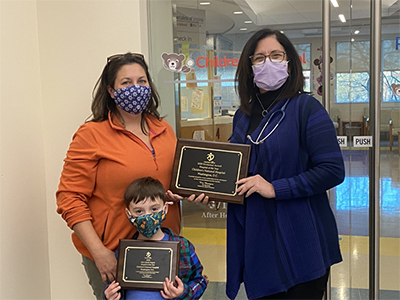
Mended Little Hearts’ Volunteer of the Year, Maryann Mayhood, and her son Joseph delivered the Hospital of the Year award to Dr. Donofrio in November 2020.
Children’s National Hospital was named Hospital of the Year by Mended Little Hearts, one of the top organizations in the U.S. for patients with congenital heart disease and their families. Children’s National was selected as the Hospital of the Year across all divisions of the Mended Little Hearts national network and the Washington, D.C. region. The hospital is recognized with the award for its efforts to empower Mended Little Hearts volunteers and make it possible for the group to provide peer support and education to children and adults with congenital heart disease, their families and the surrounding communities.
“It’s an honor to be recognized as a champion by a group like Mended Little Hearts that truly represents the voices and needs of patients and their families. We embrace and encourage their work because we know that providing the best care for children and their families goes beyond simply outstanding clinical service,” says Charles Berul, M.D., chief of Cardiology and co-director of the Children’s National Heart Institute. “We are privileged to have a group of dedicated volunteers from Mended Little Hearts who are willing to work side-by-side with our team to share peer support, education and guidance for our families at Children’s National.”
Though many in-person activities are currently on hold or held virtually for the health and safety of everyone during the COVID-19 public health emergency, Children’s National and Mended Little Hearts continue to coordinate closely together to support families as much as possible by making virtual connections and via the Mended Little Hearts “Bravery Bags,” which are given to every family and include personal essentials for a hospital stay as well as important guidance such as questions to ask care providers and how to seek more information about the care plan.
For the last few years, the hospital has also provided space within the hospital for the group to host family breakfasts and other events, making sure families have access to the information and support items they need during a hospital stay. They are also welcomed to many of the hospital’s annual events for adults and children with congenital heart disease and their families, to connect and share experiences.
“We are honored to recognize Children’s National Hospital for the outstanding work they have done to support heart patients and their families,” said Mended Hearts Inc. President Ron Manriquez. “That they have won this award is proof of the deep commitment they have to their members, families and the community at large. We are grateful for the work they do to support the Mended Little Hearts mission.”
Mended Little Hearts and its parent group, Mended Hearts, are organizations that inspire hope and seek to improve the quality of life for heart patients and their families through ongoing peer-to-peer support.

For people across the globe, plastics are synonymous with modern life and it’s impossible to avoid exposure to them, including clinical environments where a variety of frequently used materials, such as tubing and blood storage bags, are made from plastics.
For people across the globe, plastics are synonymous with modern life and it’s impossible to avoid exposure to them, including clinical environments where a variety of frequently used materials, such as tubing and blood storage bags, are made from plastics. Led by Nikki Posnack, Ph.D, principal investigator at The Sheikh Zayed Institute for Pediatric Surgical Innovation at Children’s National Hospital, a team of Children’s National researchers has been studying the potential effects of chemicals found in plastics, such as BPA and DEHP, as possible contributors to cardiovascular disease.
Along with conducting proprietary studies of the potential effects, Posnack and her team recently reviewed available scientific studies to further identify and illuminate the potential links between exposure to the synthetic additives contained in plastics and cardiovascular mortality. The article was published this month in Nature Reviews Cardiology.
In the article Posnack cites a 10-year longitudinal study with the finding that high exposure to BPA was associated with a 46-49% higher hazard ratio for cardiovascular and all-cause mortality, compared with low exposure to BPA.
“Plastics may be indispensable materials, but their ubiquity does raise concerns about the effects of our continuous exposure to plasticizer additives like di(2-ethylhexyl) phthalate (DEHP) and synthetic chemicals used to create polymers like BPA,” said Posnack. “Although disease causation can be difficult to pinpoint in population and epidemiological studies, experimental work has clearly demonstrated a direct link to plastic chemicals and cardiac dysfunction. It is clear that future collaborative endeavors are necessary to bridge the gap between experimental, epidemiological and clinical investigations to resolve the impact of plastics on cardiovascular health.”

Nikki Posnack, Ph.D, principal investigator at The Sheikh Zayed Institute for Pediatric Surgical Innovation at Children’s National Hospital.
Posnack added that, given the omnipresence of plastics and their related chemicals, biomonitoring studies have reported detectable levels of DEHP and BPA in 75-90% of the population. Occupational or clinical environments can also result in elevated exposures to these dangerous chemicals. Previous epidemiological studies have reported links between elevated urinary levels of phthalate or bisphenol, common additives in plastic, and an increased risk of coronary and peripheral artery disease, chronic inflammation, myocardial infarction, angina, suppressed heart rate variability and hypertension.
Additionally, available research has shown that incomplete polymerization or degradation of BPA-based plastic products can result in unsafe human exposure to BPA. Despite these links, the article points out, both BPA and DEHP are still manufactured in high volumes and are used to produce a wide variety of consumer and commercial products.
Further exploring implications for pediatrics, a June 2020 article published by Posnack in Birth Defects Research looks at the potential effects of plastic chemicals on the cardiovascular health of fetal, infant and pediatric groups. The article highlighted experimental work that suggests plasticizer chemicals such as bisphenols and phthalates may exert negative influence on pediatric cardiovascular health. The article systematically called out areas of concern supported by research findings. Also addressing current gaps in knowledge, Posnack outlined future research endeavors that would be needed to resolve the relationship between chemical exposures and the impact on pediatric cardiovascular physiology.
In related work, Posnack and her team are expanding their work on plastics used in blood bags to also investigate the role of blood storage duration on health outcomes. A recently published first study demonstrates that “older” blood products (stored 35 or more days) directly impact cardiac electrophysiology, using experimental models. Published October 22, 2020 in the Journal of the American Heart Association, the study concludes that the cardiac effects are likely caused by biochemical alterations in the supernatant from red blood cell units that occur over time, including but not limited to, hyperkalemia (elevated potassium levels).
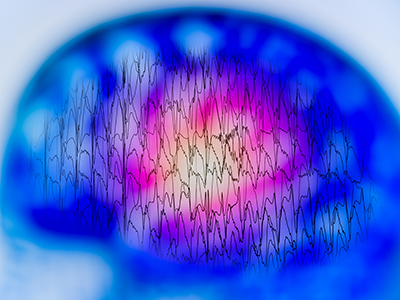
A study published in the journal Epilepsia used speckle tracking echocardiography to detect subtle changes in heart function found in pediatric patients with refractory epilepsy when compared to controls. Children with refractory epilepsy had impaired systolic ventricular strain compared to controls, not correlated to epilepsy history. These differences in ventricular function may be a biomarker that can indicate someone with epilepsy is at higher risk for Sudden Unexpected Death in Epilepsy (SUDEP).
Speckle tracking echocardiography is a non-invasive technique where software automatically identifies and tracks individual “speckles” of the myocardial wall on a routine echocardiogram in order to directly quantify the extent of contraction.
The study’s first authors, John Schreiber, M.D., medical director of Electroencephalography (EEG) and director of the Epilepsy Genetics program, and Lowell Frank, M.D., advanced imaging cardiologist and director of the Cardiology Fellowship Training program, both at Children’s National Hospital, answered some questions about the study findings.
Why is this important work?
Sudden unexpected death in epilepsy (SUDEP) is a rare but devastating consequence of epilepsy. Some of the proposed mechanisms of SUDEP implicate brain stem, cardiac and respiratory pathways.
This study identified alterations in ventricular function that may serve as one potential biomarker for SUDEP risk that can be evaluated non-invasively and regularly.
How will this work benefit patients?
Identification of children or adults with markedly impaired ventricular strain or diastolic function may provide the opportunity to implement a targeted treatment or monitoring strategy to prevent SUDEP.
What did you find that excites you? What are you hoping to discover?
These differences in cardiac strain were true for all patients with refractory epilepsy as a whole, not one particular group. This suggests that refractory convulsive epilepsy itself, rather than other patient-specific factors, produces these changes. Thanks in part to a grant from the Dravet Syndrome Foundation, the team is currently examining a cohort of patients with epilepsy due to pathogenic variants in sodium channel genes, SCN1A and SCN8A, to determine if these patients have greater degrees of impaired cardiac strain. SCN1A and SCN8A are also expressed in the heart, and patients have a considerably higher risk of SUDEP. It will be particularly exciting to examine for differences in specific genetic epilepsies.
How is this work unique?
Strain has been evaluated in many disease states in adult and pediatric populations and may be more sensitive to early myocardial damage than traditional measures of systolic and diastolic function. Children’s National Hospital has been an innovator in using speckle tracking echocardiography and similar techniques to evaluate subtle changes in heart function. This study is a great example of collaboration between The Comprehensive Pediatric Epilepsy Program and the Children’s National Heart Institute that is driving innovative research at Children’s National Hospital.
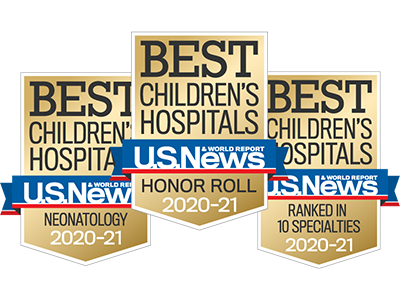
Children’s National Hospital in Washington, D.C., was ranked No. 7 nationally in the U.S. News & World Report 2020-21 Best Children’s Hospitals annual rankings. This marks the fourth straight year Children’s National has made the list, which ranks the top 10 children’s hospitals nationwide.
In addition, its neonatology program, which provides newborn intensive care, ranked No.1 among all children’s hospitals for the fourth year in a row.
For the tenth straight year, Children’s National also ranked in all 10 specialty services, with seven specialties ranked in the top 10.
“Our number one goal is to provide the best care possible to children. Being recognized by U.S. News as one of the best hospitals reflects the strength that comes from putting children and their families first, and we are truly honored,” says Kurt Newman, M.D., president and CEO of Children’s National Hospital.
“This year, the news is especially meaningful, because our teams — like those at hospitals across the country — faced enormous challenges and worked heroically through a global pandemic to deliver excellent care.”
“Even in the midst of a pandemic, children have healthcare needs ranging from routine vaccinations to life-saving surgery and chemotherapy,” said Ben Harder, managing editor and chief of Health Analysis at U.S. News. “The Best Children’s Hospitals rankings are designed to help parents find quality medical care for a sick child and inform families’ conversations with pediatricians.”
The annual rankings are the most comprehensive source of quality-related information on U.S. pediatric hospitals. The rankings recognize the nation’s top 50 pediatric hospitals based on a scoring system developed by U.S. News. The top 10 scorers are awarded a distinction called the Honor Roll.
The bulk of the score for each specialty service is based on quality and outcomes data. The process includes a survey of relevant specialists across the country, who are asked to list hospitals they believe provide the best care for patients with the most complex conditions.
Below are links to the seven Children’s National specialty services that U.S. News ranked in the top 10 nationally:
The other three specialties ranked among the top 50 were cardiology and heart surgery, gastroenterology and gastro-intestinal surgery, and urology.
Children’s National Hospital is proud to have a number of faculty members who literally wrote the books on pediatric cardiology, neonatology, neurology and pulmonology. These texts, edited by experts Gil Wernovsky, M.D., Gordon Avery, M.D., Ricardo Munoz, M.D., Anastassios Koumbourlis, M.D., MPH, Robert Keating, M.D. and Roger Packer, M.D., have become the definitive references for medical students everywhere.
Through these books, generations of children worldwide will benefit from the expertise at Children’s National:
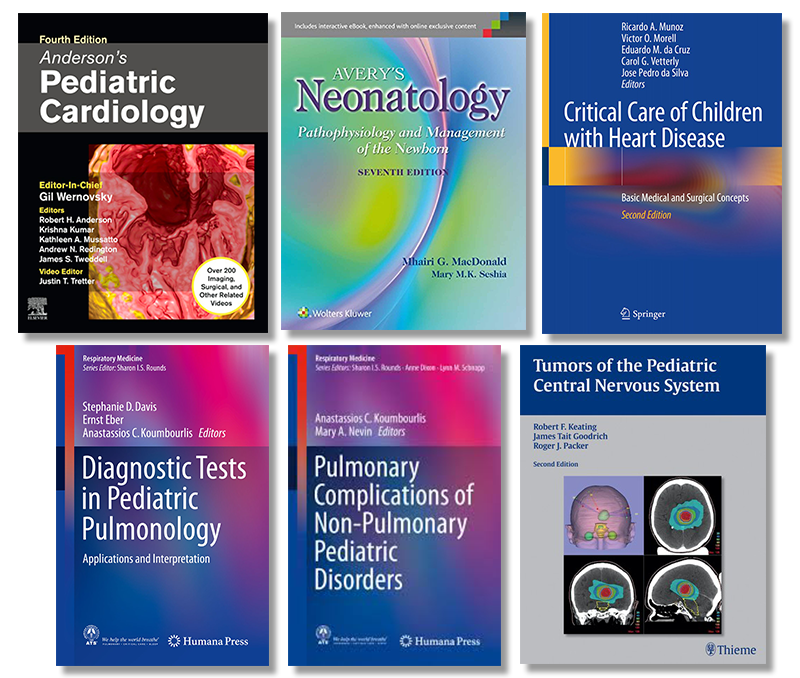
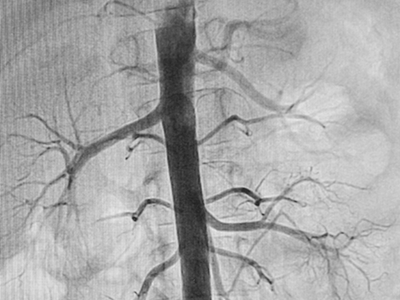
Even though mortality from congenital heart disease (CHD) has declined over the last three decades as diagnosis and treatments have advanced, the chances for a child to survive a CHD diagnosis significantly differs based on the country where he or she is born.
This eye-opening finding is drawn from the first comprehensive study of congenital heart disease across 195 countries, prepared using data from the Global Burden of Diseases, Injuries and Risk Factors Study 2017 (GBD), and recently published in The Lancet.
“Previous congenital heart estimates came from few data sources, were geographically narrow and did not evaluate CHD throughout the life course,” write the authors, known collectively as the 2017 GBD Congenital Heart Disease Collaborators. Co-lead author Meghan D. Zimmerman, M.D., worked on the study while completing her pediatric cardiology and American Heart Association Global Health Fellowships at Children’s National Hospital, and two pediatric cardiologists from Children’s National, Cardiology Associate Chief Craig Sable, M.D., and Gerard Martin, M.D., medical director of Global Services, provided leadership and oversight of this paper. The remaining collaborators are from more than 45 institutions around the world, spanning cardiology, public health and schools of medicine on every continent.
This is the first time the GBD study data was used along with all available data sources and previous publications – making it the most comprehensive study on congenital heart disease burden to date. Key differences between this study and prior estimates include:
This more comprehensive data set led to findings that showed lower predicted long-term survival, higher remission, and lower prevalence than previous studies that extrapolated evidence from studies of high-income countries. However, it also means these new estimates are a more accurate representation of the current global state of affairs. Overall, the study found:
“In high income countries like the United States, we diagnose some heart conditions prenatally during the 20-week ultrasound,” says Gerard Martin, M.D., a pediatric cardiologist at Children’s National Hospital who contributed to the study. “We catch others right after birth with a pulse oximetry screening for critical congenital heart disease. We can operate to correct a critical issue within the first week of life. And now our CHD kids are growing and thriving through adulthood and having families of their own.”
“For children born in middle- and low-income countries, these data draw stark attention to what we as cardiologists already knew from our own work in these countries – the lack of diagnostic and treatment tools leads to lower survival rates for children born with CHD,” adds Craig Sable, M.D., associate chief of cardiology at Children’s National, another primary contributor. “This is one of the most significant publications I have been a part of as it highlights the substantial loss of life to CHD in infancy around the globe.”
The authors write, “The UN has prioritized reduction of premature deaths from heart disease, but to meet the target of ‘ending preventable deaths of newborns and children under 5 years of age,’ health policy makers will need to develop specific accountability measures that address barriers and improve access to care and treatment.”
The study also includes a 400-page appendix breaking down each area by type of congenital anomaly, world region and country.
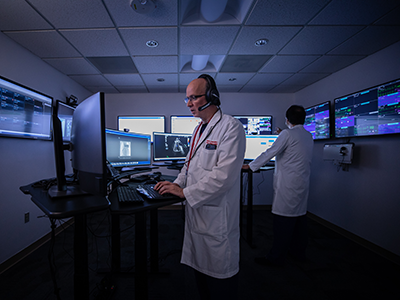
Through a new partnership with Sabará Hospital Infantil in São Paulo, Brazil, Children’s National Hospital will provide access to pediatric cardiac intensive care specialists and consultations via telehealth. This is the first international telehealth offering from Children’s National for pediatric cardiac critical care.
The partnership includes sharing care proposals, second opinion for complex cardiology cases, alignment with international benchmarks, adoption of diagnostic and therapeutic protocols, development of critical mass for continuous process improvement and continued training. Joint multidisciplinary visits will also be carried out to help Sabará validate and improve existing protocols and learn about innovations and service improvement opportunities.
Children’s National will also provide teleconference-based training for Sabará nursing staff and second opinions through medical teleconsultation with specialists in all areas of pediatric cardiology, based on each patient’s individual needs.
“It is an honor to partner with Sabará Hospital lnfantil,” says Ricardo Munoz, M.D., executive director of Telemedicine and chief of Cardiac Critical Care at Children’s National. “We look forward to working together toward our shared goal of providing the best health care possible for the children in Brazil.”

Virtual cardiology follow-ups via computer or smartphone are a feasible alternative to in-person patient follow-ups for some pediatric cardiac conditions.
A poster presentation at the AHA Scientific Sessions shows successful implementation of virtual care delivered directly to patients and families via technology.
Health provider follow-ups delivered via computer or smartphone is a feasible alternative to in-person patient follow-ups for some pediatric cardiac conditions, according to the findings of a pilot study presented at the AHA Scientific Sessions this week.
“We’ve used telemedicine in pediatric cardiology for physician-to-physician communications for years at Children’s National, thanks to cardiologists like Dr. Craig Sable,” says Ashraf Harahsheh, M.D., cardiologist at Children’s National Hospital and senior author of the study. “But this is the first time we’ve really had the appropriate technology to speak directly to patients and their families in their homes instead of requiring an in-person visit.”
“We developed it [telemedicine] into a primary every day component of reading echocardiograms around the region and the globe,” says Craig Sable, M.D., associate chief of cardiology at Children’s National. “Telemedicine has enabled doctors at Children’s National to extend our reach to improve the care of children and avoid unnecessary transport, family travel and lost time from work.”
Participants in the virtual visit pilot study were previously established patients with hyperlipidemia, hypercholesterolemia, syncope, or who needed to discuss cardiac testing results. The retrospective sample included 18 families who met the criteria and were open to the virtual visit/telehealth follow up option between 2016 and 2019. Six months after their virtual visit, none of the participants had presented urgently with a cardiology issue. While many (39%) had additional visits with cardiology scheduled as in person, none of those subsequent in-person visits were a result of a deficiency related to the virtual visit.
“There are many more questions to be answered about how best to appropriately use technology advances that allow us to see and hear our patients without requiring them to travel a great distance,” adds Dr. Harahsheh. “But my team and I were encouraged by the results of our small study, and by the anecdotal positive reviews from families who participated. We’re looking forward to determining how we can successfully and cost-effectively implement these approaches as additional options for our families to get the care they need.”
The project was supported by the Research, Education, Advocacy, and Child Health Care (REACH) program within the Children’s National Hospital Pediatric Residency Program.
###
Direct-to-Consumer Cardiology Telemedicine: A Single Large Academic Pediatric Center Experience
Aaron A. Phillips, M.D., Craig A. Sable, M.D., FAAP; Christina Waggaman, M.S.; and Ashraf S. Harahsheh, M.D., F.A.C.C., F.A.A.P.
Poster Presentation by first author Aaron Phillips, M.D., a third-year resident at Children’s National
CH.APS.12 – Man vs. Machine: Tech in Kids
AHA Scientific Sessions 2019
November 17, 2019
12:30 -1:00 p.m.
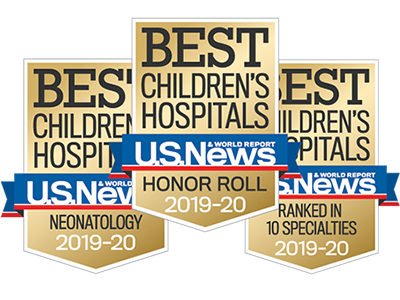
Children’s National in Washington, D.C., is the nation’s No. 6 children’s hospital and, for the third year in a row, its neonatology program is No.1 among all children’s hospitals providing newborn intensive care, according to the U.S. News Best Children’s Hospitals annual rankings for 2019-20.
This is also the third year in a row that Children’s National has been in the top 10 of these national rankings. It is the ninth straight year it has ranked in all 10 specialty services, with five specialty service areas ranked among the top 10.
“I’m proud that our rankings continue to cement our standing as among the best children’s hospitals in the nation,” says Kurt Newman, M.D., President and CEO for Children’s National. “In addition to these service lines, today’s recognition honors countless specialists and support staff who provide unparalleled, multidisciplinary patient care. Quality care is a function of every team member performing their role well, so I credit every member of the Children’s National team for this continued high performance.”
The annual rankings recognize the nation’s top 50 pediatric facilities based on a scoring system developed by U.S. News. The top 10 scorers are awarded a distinction called the Honor Roll.
“The top 10 pediatric centers on this year’s Best Children’s Hospitals Honor Roll deliver outstanding care across a range of specialties and deserve to be nationally recognized,” says Ben Harder, chief of health analysis at U.S. News. “According to our analysis, these Honor Roll hospitals provide state-of-the-art medical expertise to children with rare or complex conditions. Their rankings reflect U.S. News’ assessment of their commitment to providing high-quality, compassionate care to young patients and their families day in and day out.”
The bulk of the score for each specialty is based on quality and outcomes data. The process also includes a survey of relevant specialists across the country, who are asked to list hospitals they believe provide the best care for patients with challenging conditions.
Below are links to the five specialty services that U.S. News ranked in the top 10 nationally:
The other five specialties ranked among the top 50 were cardiology and heart surgery, diabetes and endocrinology, gastroenterology and gastro-intestinal surgery, orthopedics, and urology.

Dr. Anitha John, third from right, director of the Washington Adult Congenital Heart Program, hosts the eighth-annual “Adult Congenital Heart Disease in the 21st Century” conference, which takes place Oct. 4-5, 2019.
A two-day continuing medical education (CME) conference for physicians and clinicians treating patients with adult congenital heart disease (ACHD) takes place Oct. 4-5, 2019, at the Bethesda Marriott in Bethesda, Maryland.
The eighth-annual conference, “Adult Congenital Heart Disease in the 21st Century,” hosted by Children’s National Health System and MedStar Washington Hospital Center provides a comprehensive review of the evaluation, diagnosis and management of ACHD, including guidelines to help ACHD patients manage a healthy pregnancy and clinical guidance about the progression of congenital heart disease (CHD) treatment from adolescence through adulthood.
Two tracks accommodate these themes, with the first focusing on a multidisciplinary approach clinicians can use to help ACHD patients assess risks for pregnancy complications, while planning and managing a healthy pregnancy, with input from cardiologists, anesthesiologists and maternal fetal medicine specialists. The second focuses on cardiac defects, starting with anatomical cardiac lessons with 3D heart models, then moves to imaging review, examining echocardiograms and MRI’s, and ends with clinical management review.
“This conference brings the best science and the most innovative approaches to treatment with questions doctors receive in the exam room,” says Anitha John, M.D., Ph.D., the conference organizer and director of the Washington Adult Congenital Heart program at Children’s National. “We’re inviting patients to join the afternoon of the second day of the CME conference again this year to support shared knowledge of these concepts, which supports lifelong treatment and education.”
Dr. John planned this year’s conference with the November 6 ACHD board exams in mind, integrating topics that will appear on the third ACHD certification exam issued by the American Board of Internal Medicine.
At this year’s CME conference, more than a dozen faculty members, including several physicians and nurses from Children’s National, will guide lectures to help attendees meet 13 objectives, from understanding the prevalence of congenital heart disease and its complications to learning about when surgical interventions and referrals to specialists are necessary.
Attendees will review new and innovative PAH therapies, mechanical support therapies, catheter-based interventional procedures and appraise the use of pacemaker and defibrillator therapy among adults with CHD.
Patients and families attending the patient sessions, held from 12:30 to 3:45 p.m. on Saturday, October 5, have a chance to participate in three sessions that support the medical and social needs of ACHD patients. Topics range from workshops that address the neurodevelopment and psychosocial factors of living with a congenital heart defect to sessions that focus on reproductive options for patients and personalized lifestyle recommendations, including fitness and exercise guidelines.
“To support cardiovascular health throughout the lifespan, it helps to educate patients about their heart’s structure and unique needs,” notes Dr. John. “We want to spark a dialogue now and have future conversations with patients, especially while they are young.”
The American College of Cardiology/American Heart Association Task Force on Clinical Practice Guidelines updated ACHD treatment recommendations in August 2018, the first time in 10 years, and many of these guidelines manifest as panel discussions and interactive lectures presented at the 2019 Adult Congenital Heart Disease in the 21st Century conference.
Attendees can receive up to 12.5 credits from the Accreditation Council for Continuing Medical Education, the Accreditation Council for Pharmacy Education, the American Nurses Credentialing Center and the American Academy of PAs.
Those interested in starting their own ACHD program can attend an evening symposium, entitled “ACHD Program Building 101,” hosted by representatives from the Mid-Atlantic ACHD Regional Group. Topics in the six-session panel range from managing ACHD patients in a pediatric hospital setting to the role of clinical nurse coordinators in ACHD care.
To learn more about or to register for the conference, visit CE.MedStarHealth.org/ACHD. You can also listen to an interview with Dr. Anitha John about the upcoming Adult Congenital Heart Disease (ACHD) conference.
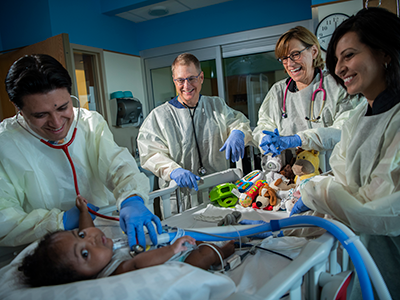
Children’s National has a new program to care for children who have severe bronchopulmonary dysplasia, a serious complication of preterm birth.
Around the 1-year-old’s crib is a tight circle of smiling adults, and at the foot of his bed is a menagerie of plush animals, each a different color and texture and shape to spark his curiosity and sharpen his intellect.
Gone are the days a newborn with extremely complex medical needs like Elijah would transfer from the neonatal intensive care unit (NICU) to the pediatric intensive care unit and transition through a couple of other hospital units by the time he was discharged. Gone are the days when he’d see a variety of new physician faces at every stop. And gone are the days he’d be confined to his room, divorced from the sights and sounds and scents of the outside world, stimulation that helps little baby’s neural networks grow stronger.
Children’s National has a new program designed to meet the unique needs of children like Elijah who have severe bronchopulmonary dysplasia (BPD), a common complication of preterm birth.
“It’s more forward-thinking – and I mean thinking for the future of each individual baby, and it’s allowing the baby to have one team and one location to take advantage of a deep knowledge of and relationship with that baby and family,” says Robin Steinhorn, M.D. Dr. Steinhorn is senior vice president of the Center for Hospital-Based Specialties and one of Children’s multidisciplinary team members who visited Elijah’s bed twice weekly during his lengthy hospitalization and who continues to see him regularly during outpatient visits.
“The pulmonologist, the neonatologist, the respiratory therapist, the physical therapist, the dietitian, the cardiologist – we all come as a team to work together for the good of the baby,” Dr. Steinhorn adds. “We stick with these babies through thick and thin. We will stick with that baby with this team and this location until they are ready to go home – and beyond.”
BPD, a serious lung condition, mostly affects extremely low birthweight preterm babies whose lungs were designed to continue developing inside the womb until the pregnancy reaches full term. Often born months before their due dates, these extremely vulnerable newborns have immature organs, including the lungs, which are not ready for the task of breathing air. Children’s program targets infants who experience respiratory failure from BPD. The respiratory support required for these infants ranges from oxygen delivered through a nasal cannula to mechanical ventilators.
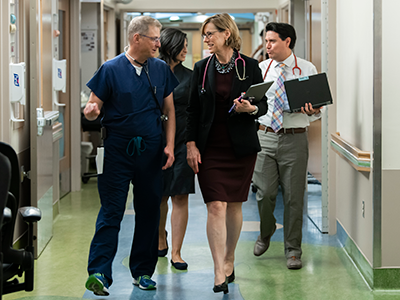
“It’s more forward-thinking – and I mean thinking for the future of each individual baby, and it’s allowing the baby to have one team and one location to take advantage of a deep knowledge of and relationship with that baby and family,” says Robin Steinhorn, M.D.
About 1 percent of all preterm births are extremely low birthweight, or less than 1,500 grams. Within that group, up to 40 percent will develop BPD. While they represent a small percentage of overall births, these very sick babies need comprehensive, focused care for the first few years of their lives. And some infants with severe BPD also have pulmonary hypertension which, at Children’s National, is co-managed by cardiology and pulmonary specialists.
Children’s BPD team not only focuses on the child’s survival and medical care, they focus on the neurodevelopmental and social care that a baby needs to thrive. From enhanced nutrition to occupational and physical therapy to a regular sleep cycle, the goal is to help these babies achieve their full potential.
“These babies are at tremendous risk for long-term developmental issues. Everything we do is geared to alleviate that,” adds John T. Berger III, M.D., director of Children’s Pulmonary Hypertension Program.
“Our NICU care is more focused, comprehensive and consistent,” agrees Mariam Said, M.D., a neonatologist on the team. “We’re also optimizing the timing of care and diagnostic testing that will directly impact health outcomes.”
Leaving no detail overlooked, the team also ensures that infants have age-appropriate developmental stimuli, like toys, and push for early mobility by getting children up and out of bed and into a chair or riding in a wagon.
“The standard approach is to keep the baby in a room with limited physical or occupational therapy and a lack of appropriate stimulation,” says Geovanny Perez, M.D., a pulmonologist on the team. “A normal baby interacts with their environment inside the home and outside the home. We aim to mimic that within the hospital environment.”
Dr. Steinhorn, who had long dreamed of creating this comprehensive team care approach adds that “it’s been so gratifying to see it adopted and embraced so quickly by Children’s NICU caregivers.”

Dr. Martin and a patient share a smile after a visit at Children’s National Health System.
For pediatric cardiologists, February, National Heart Month, is a special time. We share health tips in the hospital and talk about heart health with those looking for advice, especially with patients and families impacted by congenital heart disease (CHD). It’s also a time to look back at what’s worked well in the field, while accelerating advancements for CHD treatment.
To start, congenital heart disease, a structural abnormality of the heart or of the blood vessels surrounding it, is the most common birth defect and occurs in about one in every 100 live births, affecting 40,000 babies born in the U.S. each year. One million children and 1.4 million adults in the U.S. have CHD. Over the past 15 years, pediatric cardiologists have cut mortality rates for CHD in half. Gratefully, now instead of saving children’s lives, the emphasis is on improving them. The catalyst for this paradigm shift isn’t simply due to a medical breakthrough, but is also the result of collaboration and advocacy.
Pediatric cardiologists worked together with other stakeholders – nurses, neonatologists, parents, state and federal agencies – to implement newborn screening methods in hospitals, with the introduction pulse oximetry screenings for critical congenital heart defects (CCHD). The screening, which measures blood oxygen levels in newborns, focuses on screening babies for CCHD before they leave the hospital. The concept and a national protocol for screening began with a small project in 2002, was endorsed by medical associations by 2012 and required by all states in 2018. The impact of CCHD screening of newborns is remarkable. Data published in JAMA showed a 33 percent reduction in CCHD infant deaths associated with states that required CCHD screening.
The pulse oximetry screening’s impact on the number of lives saved goes beyond identifying newborns with CCHD. Worldwide, though the detection of secondary conditions, such as hypothermia, pneumonia, and sepsis, the pulse oximetry screening is estimated to save roughly 772,000 lives by 2030.
In addition to newborn screening recommendations for CCHD, a group of cardiologists, including myself, worked for the Joint Council on Congenital Heart Disease (JCCHD) to form and support the National Pediatric Cardiology Quality Improvement Collaborative (NPC-QIC). We developed measures to see how we could improve survival rates between surgeries for infants born with hypoplastic left heart syndrome (HLHS), one of the most common and severe forms of CCHD.
Babies born with HLHS require two heart surgeries within the baby’s first six months. Babies that survived the first operation had a significant mortality rate (15 percent) and frequent growth failure, while waiting for the second operation. Our focused aims were to both decrease the death rate and improve growth in these children. We analyzed data from medical centers, utilized quality improvement principals from the Institute for Health Care Improvement, talked with doctors and families, and invited teams from across the U.S. to partner with us to put quality and safety measures into place.
We emphasized the following points:
The implementation of these procedures reduced interstage mortality rates and the number of growth failures for HLHS patients. In 2008, six centers participated in the NPC-QIC pilot. By 2018, 65 medical centers in the U.S. and Canada used these methods. Similar to the pulse oximetry screening guidelines, this new method wasn’t the result of a medical breakthrough, but the result of shared learning and shared infrastructure.
Now, we’re referring more adult congenital heart patients to board-certified adult congenital heart disease (ACHD) specialists, a better fit than internists or pediatric cardiologists. Adults with congenital heart defects should have their heart examined at least once by a specialist and those with complex needs should meet with a specialist at least every two years. More than 300 board-certified ACHD specialists practice in the U.S. and the field is growing. The third ACHD board exam takes place this year.
Over the next few decades, I hope we’ll make even more progress with understanding, diagnosing and treating CHD.
Emerging research examines genetic clues for congenital heart defects, which were once thought to account for 8 percent of cases and may now account for 30 percent of conditions. We’re working with neurologists to examine the timing and pathway of potential oxygen inefficiencies that occur as the brain develops in utero, infancy, and after neonatal surgery. We’ve come a long way, but we continue looking at new frontiers and for innovative solutions.
Fortunately, as cardiologists, we’re good at fixing problems. We work with surgeons and medical teams to repair holes in hearts, or replace them, and reroute blood from an underdeveloped left ventricle to improve circulation. For almost every heart defect, we have evidence-based solutions. However, to continue to help children worldwide, it’s imperative that we don’t forget about what works well: good science, tracking data, sharing best practices, active listening, transparency and constant collaboration.
Gerard Martin, M.D., F.A.A.P., F.A.C.C., F.A.H.A., is a cardiologist and the medical director of global services at Children’s National Health System. Dr. Martin has practiced pediatric cardiology for 34 years and is the Dan G. McNamara keynote speaker at the American College of Cardiology’s 2019 Scientific Sessions. Follow Dr. Martin on Twitter @Gerard_MD.
This article first appeared on KevinMD.com.

Nikki Posnack, Ph.D., assistant professor at the Children’s National Heart Institute, is an early-stage investigator examining the impact plastic chemical exposure has on the developing hearts of newborns and young children.
For newborns or children in the pediatric intensive care unit, plastic tubing is part of daily life. It delivers life-sustaining blood transfusions, liquid nutrition and air to breathe. But small amounts of the chemicals in the plastic of this tubing and other medical devices can leak into the patient’s bloodstream. The potential effects of these chemicals on the developing hearts of newborns and very young children are not well understood.
One researcher, Nikki Posnack, Ph.D., an assistant professor at the Children’s National Heart Institute, aims to change that and shares her early insights, funded by the National Center for Advancing Translation Science (NCATS), in an NCATS news feature.
“While plastics have revolutionized the medical field, we know chemicals in plastics leach into the body and may have unintended effects,” Posnack said. “The heart is sensitive to toxins, so we want to look at the effect of these plastics on the most sensitive patient population: kids who are recovering from heart surgery and already prone to cardiac complications.”

Dr. Bear Bot’s “robot-only” parking space in the Cardiac ICU. Alejandro Lopez-Magallon, M.D., is featured on the robot display screen, where he drives the robot from his location in the command center, in order to visit patient rooms and capture additional medical information and connect with patients, parents, and attending nurses and physicians.
The telemedicine robot at Children’s National arrived in late August 2018 and recently completed a 90-day test period in the tele-cardiac intensive care unit (cardiac ICU) at Children’s National. The bot travels between rooms as a virtual liaison connecting patients and attending nurses and physicians with Ricardo Munoz, M.D., executive director of the telemedicine program and the division chief of critical cardiac care, and Alejandro Lopez-Magallon, M.D., a cardiologist and medical director of the telemedicine program.
Drs. Munoz and Lopez-Magallon use a nine-screen virtual command center to remotely monitor patient vitals, especially for infants and children who are recovering from congenital heart surgery, flown in for an emergency diagnostic procedure, such as a catheterization, or who are in the process of receiving a heart or kidney transplant. Instead of traveling to individual rooms to check in on the status of one patient, the doctors can now monitor multiple patients simultaneously, enhancing their ability to diagnose, care for and intervene during critical events.
If Drs. Munoz or Lopez-Magallon need to take an X-ray or further examine a patient, they drive the robot from its ‘robot-only’ parking space adjacent to the nurse’s station, and connect with attending doctors and nurses in the teaming area. The onsite clinicians accompany one of the telemedicine doctors, both of whom remain in the command center but appear virtually on the robot’s display screen, to the patient’s room to capture additional medical information and to connect with patients and families.
Over time, the telemedicine team will measure models of efficiency in the tele-cardiac ICU, such as through-put, care coordination, and standards of safety, quality and care, measured by quality of life and short- and long-term patient health outcomes. This test run will serve as a model for future command centers offering remote critical care.
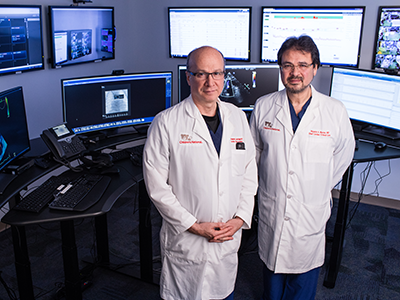
(R) Ricardo Munoz, M.D., executive director of the telemedicine program and the division chief of critical cardiac care, and Alejandro Lopez-Magallon, M.D., a cardiologist and the associate medical director of the telemedicine program in the tele-cardiac ICU command center.
“As technology and medicine advance, so do our models of telemedicine, which we call virtual care,” says Shireen Atabaki, M.D., M.P.H., an emergency medicine physician at Children’s National, who manages an ambulatory virtual health program, which enables patients to use virtual health platforms to connect with doctors, but from the comfort of their home. “We find the patient-centered platforms and this new technology saves families’ time and we’re looking forward to studying internal models to see how this can help our doctors, enabling us to do even more.”
The ongoing virtual connection program that Dr. Atabaki references launched in spring 2016 and has enabled 900 children to connect to a doctor from a computer, tablet or smart phone, which has saved families 1,600 driving hours and more than 41,000 miles over a two-year period. Through this program, virtual care is provided to children in our region by 20 subspecialists, including cardiologists, dermatologists, neurologists, urgent care doctors, geneticists, gastroenterologists and endocrinologists.
To extend the benefits of virtual communication, while saving mileage and time, Dr. Atabaki and the telemedicine team at Children’s National will partner with K-12 school systems, local hospitals and health centers and global health systems.
The Children’s National robot was named Dr. Bear Bot after a 21-day voting period with patients and staff, beating 14 other child-selected names, including SMARTy (Special Medical Access to Remote Technology), Dr. Bot and Rosie. Dr. Bear Bot celebrated with an official reveal party on Valentine’s Day, which was streamed to over 220 patients through the hospital’s closed-circuit television and radio station.
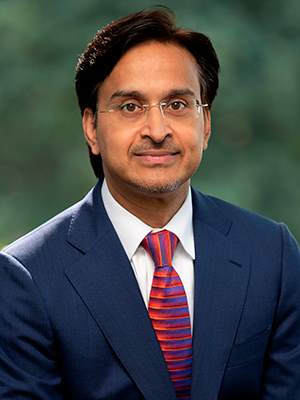
Shriprasad Deshpande, M.B.B.S., M.S., a pediatric cardiologist, joins Children’s National Health System as the director of the advanced cardiac therapies and heart transplant program.
Shriprasad Deshpande, M.B.B.S., M.S., a pediatric cardiologist, has joined Children’s National Health System as the director of the advanced cardiac therapies and heart transplant program.
Dr. Deshpande, an intensivist and heart failure and transplant cardiologist, will work within the Children’s National Heart Institute (the Division of Cardiology and the Division of Cardiac Intensive Care) to guide the diagnosis and treatment of pediatric heart failure. He will also work with researchers, surgeons and engineers to accelerate the field of biomedical research and make it easy for patients to receive advanced therapies, such as mechanical pumps to support circulation, and, if necessary, heart transplant.
“Subspecializing in personalized care is critical for all patients right now, not just adults,” says Dr. Deshpande. “This is one of the reasons I’m looking forward to working with Children’s National, a leader in the many subdivisions of pediatric medicine and research.
“Our priority is to recognize the special needs of infants and children as they relate to heart failure,” he adds. “We want to provide the best care and advance science at the same time.”
As an example, a grant from the National Institutes of Health enabled Dr. Deshpande to test ventricular assist devices for infants. Through another NIH grant, he analyzed the safety of organ transplants by testing a donor’s DNA, instead of conducting invasive biopsies in children.
“The field of cardiology is in a unique position now to take advantage of discoveries happening in science, technology and engineering,” says Dr. Deshpande. “In addition to thinking about the logistics of heart transplants, we’re thinking about how we can delay the need for a heart transplant, understand how to grow tissue better and utilize technology to improve these outcomes. We’re investing in a child’s quality of life.”
As the medical director of Mechanical Circulatory Support Program at Children’s Healthcare of Atlanta, Dr. Deshpande led the mechanical circulatory support program and created a subspecialty clinic to provide treatment for pediatric heart failure patients. He started the Muscular Dystrophy Cardiomyopathy clinic, which analyzes and treats cardiovascular comorbidities associated with muscular dystrophy. While he was an assistant professor of pediatrics at Emory University School of Medicine, he created a curriculum for pediatric cardiologists and for nurses training in the cardiac intensive critical care unit.
Dr. Deshpande has published more than 70 studies and abstracts and will oversee clinical practice models, subspecialty clinics and academic research efforts at Children’s. His current research portfolio, inclusive of grants from the NIH and other funding agencies, is robust and varied: He’s studying how to improve mechanical support for complex heart disease patients, how to improve the performance of current pumps and how to develop new algorithms for these devices. Improving the diagnosis of transplant rejection, using technology to improve compliance and using new technologies to diagnose rejection, without invasive biopsies, are his other research interests.
Dr. Deshpande serves as the chair of the scientific committee at the nonprofit Enduring Hearts and is on the American Heart Association’s Strategically Focused Research Network committee.

Craig Sable, M.D., associate chief of the division of cardiology and director of echocardiography at Children’s National Health System, earned a lifetime achievement award, formally known as the 2018 Cardiovascular Disease in the Young (CVDY) Meritorious Achievement Award, on Nov. 10 at the American Heart Association’s Scientific Sessions 2018.
The CVDY Council bestows the prestigious award to individuals making a significant impact in the field of cardiovascular disease in the young. The CVDY Council supports the mission to improve the health of children and adults with congenital heart disease and acquired heart disease during childhood through research, education, prevention and advocacy.
Dr. Sable is recognized for his entire body of research, education and advocacy focused on congenital and acquired heart disease, but especially for his rheumatic heart disease (RHD) research in Uganda.
Over the past 15 years, Dr. Sable has brought more than 100 doctors and medical staff to Kampala, the capital and largest city in Uganda, partnering with more than 100 local doctors and clinicians to develop a template for a sustainable infrastructure to diagnose, treat and prevent both RHD and congenital heart disease.
RHD is a result of damage to the heart valves after acute rheumatic fever (ARF). The process starts with a sore throat from streptococcal infection, which many children in the United States treat with antibiotics.
“For patients who develop strep throat, their body’s reaction to the strep throat, in addition to resolving its primary symptoms, can result in attacking the heart,” says Dr. Sable. “The initial damage is called acute rheumatic fever. In many cases this disease is self-limited, but if undetected, over years, it can lead to long-term heart valve damage called rheumatic heart disease. Unfortunately, once severe RHD develops the only treatment is open-heart surgery.”
In 2017, Sable and the researchers published a study in the New England Journal of Medicine about the global burden of RHD, which is often referred to as a disease of poverty.
RHD is observed more frequently in low- and middle-income countries as well as in marginalized communities in high-income countries. RHD has declined on a global scale, but it remains the most significant cause of morbidity and mortality from heart disease in children and young adults throughout the world.
In 2017 there were 39.4 million causes of RHD, which resulted in 285,000 deaths and 9.4 million disability-adjusted life-years.
In 2018 the World Health Organization issued a referendum recognizing rheumatic heart disease as an important disease that member states and ministries of health need to prioritize in their public health efforts.
The common denominator that drives Dr. Sable and the global researchers, many of whom have received grants from the American Heart Association to study RHD, is the impact that creating a scalable solution, such as widespread adoption of vaccines, can have on entire communities.
“The cost of an open-heart surgery in Uganda is $5,000 to $10,000, while treatment for a child with penicillin for one year costs less than $1,” says Dr. Sable. “Investment in prevention strategies holds the best promise on a large scale to eradicate rheumatic heart disease.”
Sable and the team have screened more than 100,000 children and are conducting the first randomized controlled RHD trial, enrolling nearly 1,000 children, to examine the effectiveness of using penicillin to prevent progression of latent or subclinical heart disease, the earliest form of RHD.
During the Thanksgiving holiday weekend, Dr. Sable and a team of surgeons will fly back to Uganda to operate on children affected by RHD, while also advancing their research efforts to produce a scalable solution, exported on a global scale, to prevent RHD in its earliest stages.
Dr. Sable and colleagues from around the world partner on several grant-funded research projects. Over the next few years, the team hopes to answer several important questions, including: Does penicillin prevent the earliest form of RHD and can we develop a vaccine to prevent RHD?
To view the team’s previously-published research, visit Sable’s PubMed profile.
To learn about global health initiatives led by researchers at Children’s National, visit www.GHICN.org.

